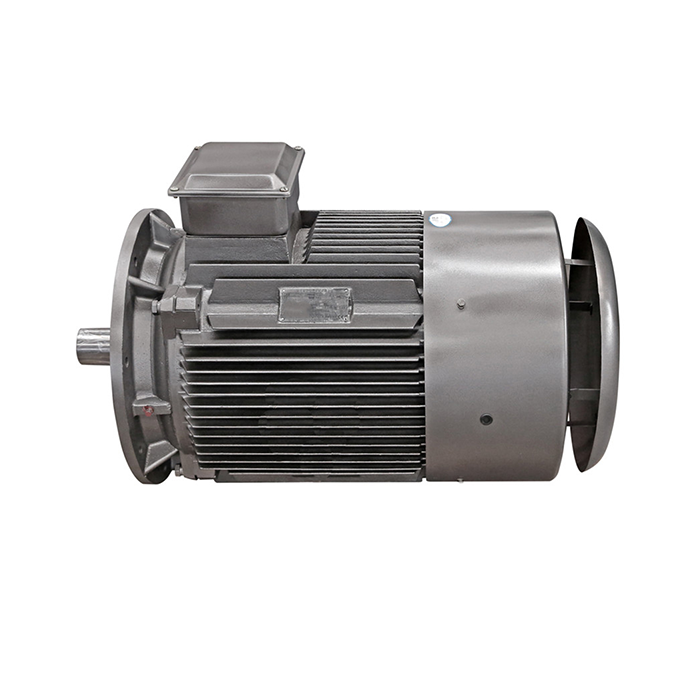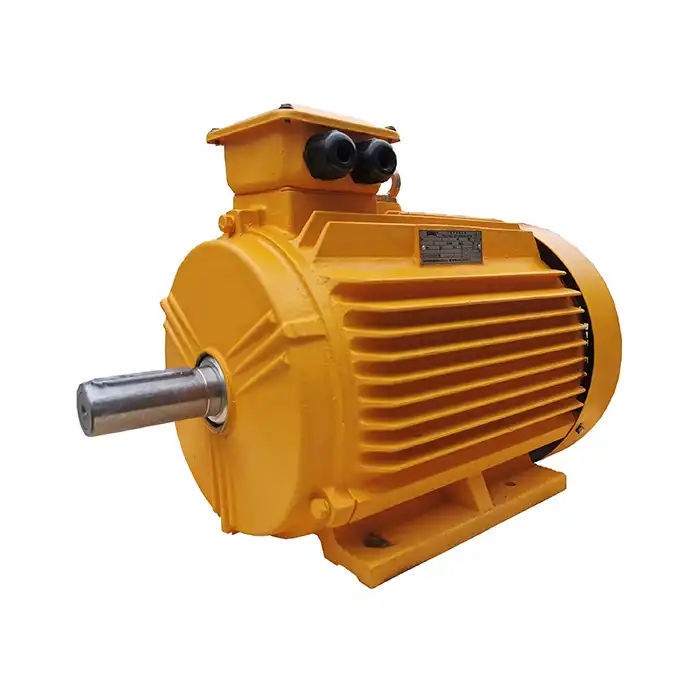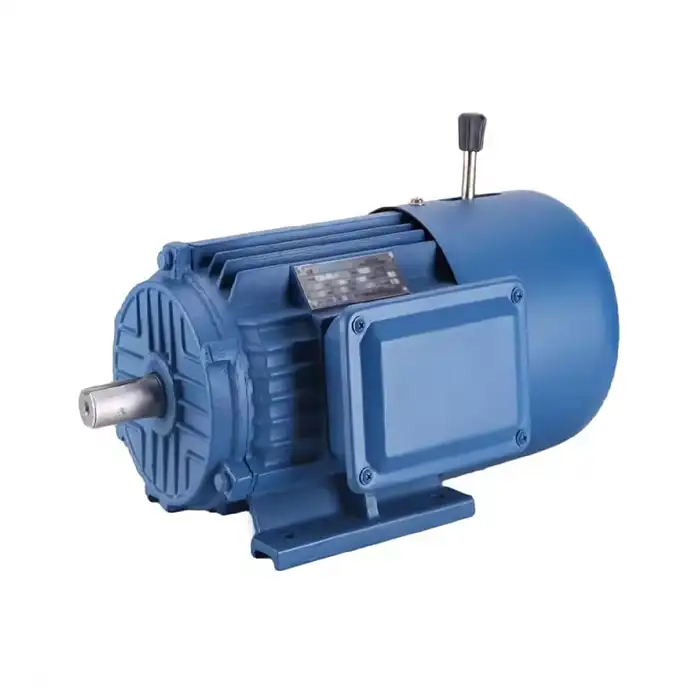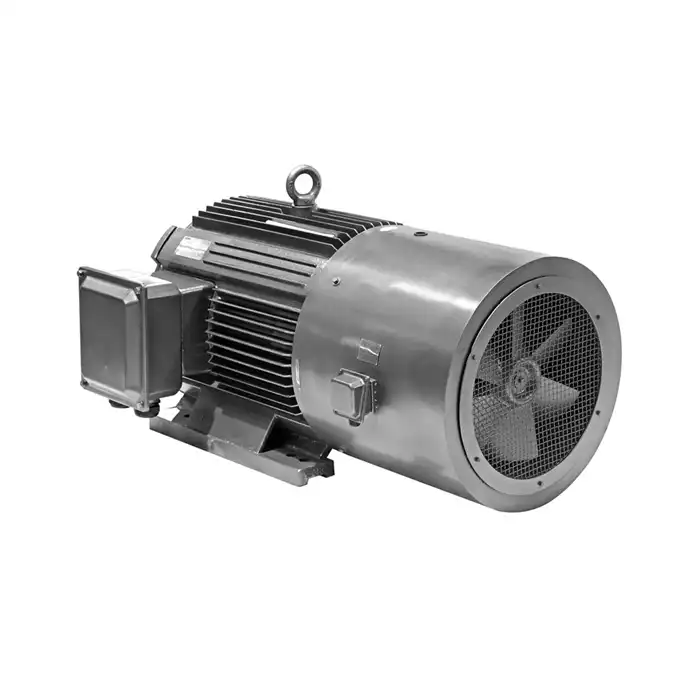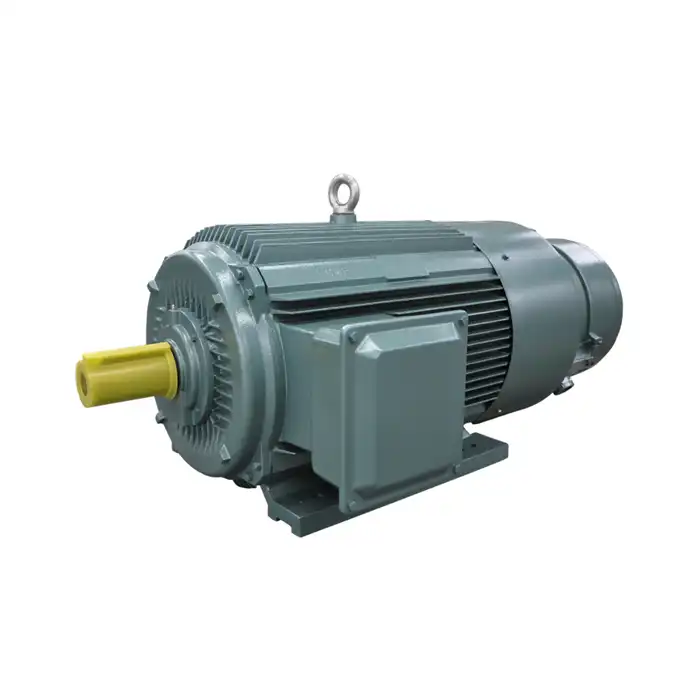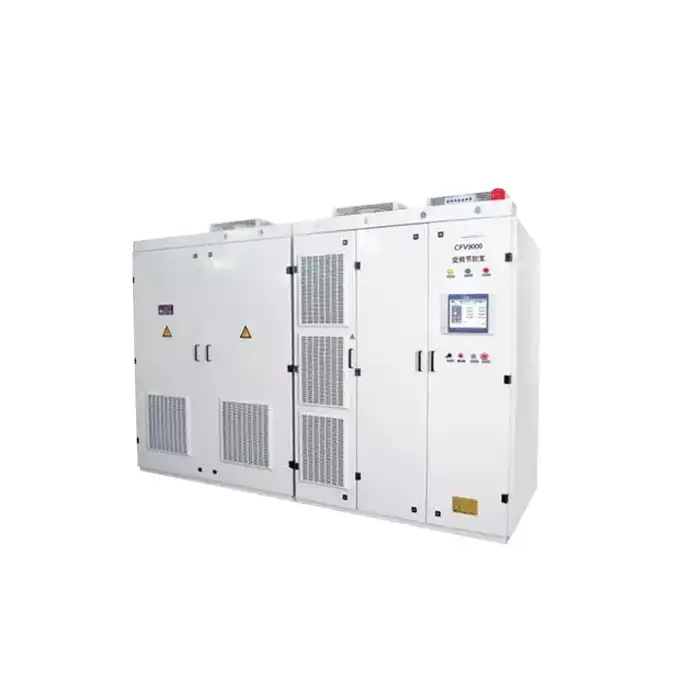Decoding the Pole-Speed Relationship in Motors
The number of poles in an LV induction motor directly affects its synchronous speed, which is the theoretical speed at which the motor would run if there were no slip. This relationship is fundamental to motor operation and selection.
The Inverse Relationship: More Poles, Lower Speed
In LV induction motors, there's an inverse relationship between the number of poles and the motor's speed. Motors with fewer poles rotate faster, while those with more poles operate at lower speeds. This relationship is governed by a simple formula:
Synchronous Speed (rpm) = (120 × Frequency) / Number of Poles
For instance, in a 60 Hz power system:
- A 2-pole motor has a synchronous speed of 3600 rpm
- A 4-pole motor runs at 1800 rpm
- An 8-pole motor operates at 900 rpm
The Role of Slip in Actual Motor Speed
While the synchronous speed is theoretical, the actual speed of an LV induction motor is slightly lower due to slip. Slip is the difference between the synchronous speed and the actual rotor speed, typically ranging from 1% to 5% depending on motor design and load.
Impact of Frequency on Motor Speed
The power supply frequency also plays a role in determining motor speed. In regions using 50 Hz power, the speeds will be proportionally lower. For example, a 4-pole motor on a 50 Hz system would have a synchronous speed of 1500 rpm instead of 1800 rpm.
How does pole changing enable multi-speed operation in induction motors?
Pole changing is a technique that allows LV induction motors to operate at multiple speeds, providing flexibility in various industrial applications. This method involves altering the number of effective poles in the motor's stator winding.
Dahlander Winding: A Common Pole-Changing Method
The Dahlander winding method is widely used in electric motors to achieve two distinct speeds within a single motor unit. This technique leverages the stator windings’ reconfiguration to switch between two speed settings, typically offering a 2:1 speed ratio. For example, in one configuration, a motor might operate at 1800 rpm, and by changing the stator connections, it can switch to 900 rpm. This method is particularly useful in applications where only two different speeds are required, such as in certain types of pumps or conveyors. The Dahlander winding is an efficient solution that eliminates the need for multiple motors, reducing the overall cost and complexity of the system.
Separate Winding Systems for Multiple Speeds
Another method to achieve multiple speeds in a single motor involves using separate winding systems within the motor. Each set of windings is designed with a specific pole number, providing different speed options depending on the connection chosen. This approach allows for greater flexibility in speed selection, enabling a variety of speed ratios beyond the 2:1 configuration offered by the Dahlander winding. It is ideal for applications that require a broader range of speeds, such as industrial machinery or HVAC systems, where varying operational speeds can enhance efficiency and performance.
Electronic Control for Seamless Speed Changes
In modern low-voltage (LV) induction motors, electronic controls, such as Variable Frequency Drives (VFDs), are commonly used to achieve smooth and continuous speed changes. Unlike pole-changing methods, VFDs do not require mechanical alterations to the motor but instead adjust the input frequency of the motor's power supply, enabling seamless speed variation. This method allows for precise control over motor speed, providing smooth acceleration and deceleration without the need for additional winding configurations. VFDs are particularly advantageous in applications requiring dynamic speed adjustments, like in elevators, escalators, or automated production lines, where variable speed operation is crucial for performance and energy efficiency.
Optimal Pole Configuration for Different Applications
Selecting the right pole configuration for an LV induction motor is crucial for achieving the desired performance in specific applications. Different industries and processes have varying speed requirements, and choosing the appropriate pole number can optimize efficiency and operation.
High-Speed Applications: 2-Pole and 4-Pole Motors
For applications requiring high speeds, 2-pole and 4-pole motors are often the go-to choices. These configurations are commonly used in:
- Pumps and compressors in the oil and gas industry
- Industrial fans and blowers
- Machine tool spindles
Medium-Speed Applications: 6-Pole and 8-Pole Motors
When moderate speeds are needed, 6-pole and 8-pole motors provide a good balance of speed and torque. These are frequently used in:
- Conveyor systems in manufacturing and logistics
- Cooling tower fans
- Mixers and agitators in the chemical industry
Low-Speed, High-Torque Applications: 10-Pole and Above
For applications demanding high torque at low speeds, motors with 10 poles or more are ideal. These configurations find use in:
- Large industrial crushers and mills
- Slow-moving conveyor belts in mining operations
- Textile machinery requiring precise speed control
Energy Efficiency Considerations in Pole Selection
While pole number primarily affects speed, it also influences motor efficiency. Generally, 4-pole motors offer a good balance of efficiency and speed for many industrial applications. However, the specific efficiency requirements of your application should be considered alongside speed when selecting a motor.
The Role of Load Characteristics in Motor Selection
The load characteristics of your application play a crucial role in determining the optimal pole configuration. Constant torque loads, variable torque loads, and constant power loads each have different speed-torque requirements, which influence the ideal pole number for the motor.
Optimize Your Industrial Operations with XCMOTOR's LV Induction Motors
XCMOTOR offers a comprehensive range of LV induction motors designed to meet diverse industrial needs. Our motors, available in various pole configurations, combine reliability, efficiency, and performance to drive your operations forward. With power outputs ranging from 0.75kW to 1000kW and voltage options from 380V to 660V, we have the right motor for your application.
Experience the XCMOTOR difference:
- High-quality construction for extended operational life
- IE3 efficiency class for reduced energy consumption
- Versatile design suitable for various industrial applications
- Customizable options to meet specific requirements
Ready to enhance your industrial processes? Contact our expert team today at xcmotors@163.com to discuss your motor needs and find the perfect solution for your application.



